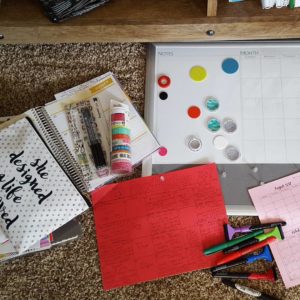 A friend of mine, a mother of three small ones, posted the following question on Facebook:
A friend of mine, a mother of three small ones, posted the following question on Facebook:
Mom friends…how do you stay organized? Between my husband and I and our work commitments, and the 3 kiddos school/preschool events and due dates, activities, appointments, etc. I’m feeling a bit overwhelmed! I currently use outlook for work and a paper planner/calendar for home (yes, I like to write things down, including my to do list), but I am afraid I am going to double-book/overlook things. What works for you?
I loved reading the replies from young moms, each wanting to offer was has worked or is working for them – all very wise and thoughtful. I avoided answering, because, after all, my youngest child is 21 and times have changed; there are so many new calendar and organizing options for families.
Yet as I pondered, and enjoyed the camaraderie of the young moms, I reflected on what we used, and the choice I would make today amongst all the choices. Twenty-one years ago, when our oldest was entering Kindergarten, we too were beginning the journey of navigating a calendar full of activities and commitments that comes with having three children. Although the internet was available and a part of our lives, the many tools and applications were not available.
Yet even if I were to begin parenting today with access to all the many calendaring and organization tools, I would still use the same method of organizing all our events and activities – a family wall calendar. Because it isn’t about the calendar /organization method per se’, but about the why.
I recommend a visual, large wall calendar because it is visible and there are so many advantages beyond just keeping track of schedules. Here is why I recommend a large wall calendar, central in the home, with all-member access:
1. Children learn calendar skills. The concept of time is a learned skill; following the organization of days into a week, weeks into months, and months into a year help reinforce skills children are learning in their schooling.
2. Calendars teach reading. As children look at the calendar, they are learning to recognize not only the spelling of each day and month, but the order of the days of the week and months of the year.
3. Math skills are introduced. Understanding days as part of a week, and weeks as part of a month teaches parts of a whole and sequencing. As children look at the daily calendar, they begin to correlate numeral to number. A calendar is a great tool for teaching and reciting the days of the week and days of the month. The sequencing and order of the months teaches patterns as well.
4. Scheduling teaches about families. Rarely can a family attend every single event and activity together. Schedule conflicts offer opportunity for learning and practicing self-sacrifice, cooperation, and supporting one another.
5. Time management is life skill. As much as we want to do everything – we can’t. Large-scale family calendars visually show that there is never enough time for everything, but individually and together families make choices based on their priorities.
6. Celebrations are an important part of family life. Birthdays, anniversaries and other days are an important part of family and need to be observed. Learning to celebrate with others and to be celebrated is an important interpersonal skill.
Whatever you choose, make it work for YOUR family. Every family is unique with its own set of quirks, activities and priorities. Choose what is best and what works for you.
For the love of our families,